
Fast, affordable Internet access for all.
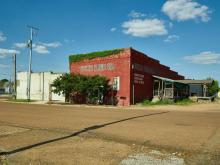
The establishment of a new broadband office in Mississippi heralds a new era in the state’s efforts to bring high quality broadband to all its residents, especially those living in the most rural parts of the state.
On the forefront of that effort is the Delta Electric Power Association, an electric cooperative currently building out fiber infrastructure in the Mississippi Delta region – a mostly rural part of the state with a majority Black population and where about a quarter of residents do not have access to broadband of any kind.
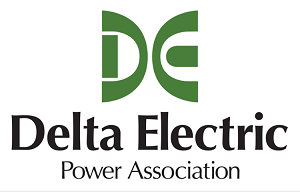
As in other states with sizable rural areas, electric cooperatives are playing a major role in building out high-speed Internet infrastructure.
In Mississippi, Delta Electric, has a service area that covers ten counties in the northwestern part of the state, providing electricity for 4,235 industrial, 3,144 commercial, and 21,174 residential member-owners.
Now, the cooperative has set its sights set on bringing high-speed Internet service to its members, left behind by the big national providers who do not consider the region profitable enough to invest in.
Electric Cooperative Starts With CARE(S)
It started in 2020, when the electric cooperative was awarded a $4.9 million Coronavirus Aid, Relief, and Economic Security (CARES) Act grant for a fiber pilot serving Carroll County with gig speed connections.
DE received an additional $46.9 million in Rural Digital Opportunity Fund (RDOF) funding to expand beyond the pilot area and build out across its service area under a subsidiary it created for this new broadband venture, called DE LightSpeed.
Today, Delta Electric serves as a leading example of Mississippi’s strategy to lean on its electric cooperatives to improve high-speed Internet connectivity across the state.
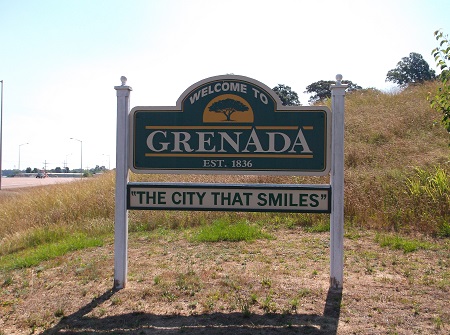
Out of the $75 million in CARES funding that the state set aside for broadband, $65 million was earmarked for electric cooperatives. As a result, 16 electric cooperatives including Delta Electric applied for state grants in the first round of funding. And state officials eventually decided to take the $10 million in leftover funds and put it into the pot for a second round of funding for electric cooperatives.
Delta Electric received $4.4 million in the first round and another $500,000 in the second, and then the cooperative combined that with $4.9 million of its own funds to jumpstart construction.
Service is currently available in parts of Carroll and Grenada County, but the cooperative looks to continue expanding its emerging fiber network offering subscribers 100 Mbps symmetrical service for $65/month or a gig speed connection for $85/month.
To continue its expansion work, Delta Electric is expected to apply for funding under the federal Broadband Equity, Access & Deployment (BEAD) program, which will channel $1.2 billion into Mississippi’s coffers to help the state connect unserved and underserved residents within its borders. To administer the incoming historic investment, Mississippi has established a new central office for broadband known as the Broadband Expansion and Accessibility of Mississippi (BEAM) office, created in 2022 under HB 1029.
New Office to Manage Federal Funding
Before the BEAM came into focus, Mississippi’s Public Utilities Staff was in charge of doling out funds for broadband projects, having already distributed $75 million in CARES funding in 2020 and another $32 million it was awarded by the state.
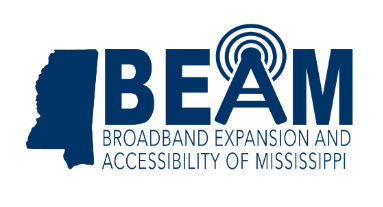
But the new BEAM office has now taken over all administrative responsibilities and this coming winter will begin its oversight of over $150 million in American Rescue Plan funding and all funding from the BEAD program.
With federal funding coming down the pipeline, state leaders say they want to ensure investments are made in the areas that most need it. To that end, BEAM officials are leading data collection efforts to correct the FCC’s faulty federal broadband maps so that they accurately represent the state’s connectivity needs.
The state has also created www.broadbandms.com, a platform where residents can test their Internet speeds and participate in surveys to gauge broadband access and digital skills. Residents who don’t have a home Internet subscription can text “Internet” to a designated phone number to make sure that the maps recognize their home as unserved.
Focusing on Connectivity Needs in the Delta
Delta Electric’s work is especially significant because of the acute need for broadband across its service territory, where nearly 1 in 5 homes do not have access to broadband, and 1 in 4 rurally-located homes do not have access. About 60 percent of those living in the region live in rural areas, where the majority of Delta residents are Black.
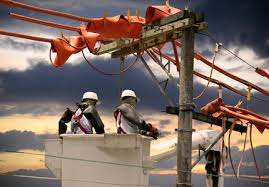
To signal that the Delta region is a high priority area, BEAM Director Sally Doty has made about a dozen visits to the Delta and her office says it has engaged in at least 20 meetings to spread the word about the work that BEAM is doing.
These efforts come on the heels of criticism from advocacy groups like the nonprofit public interest law firm Mississippi Center for Justice (MCJ), which has voiced concern over the possibility that the Delta region may not receive the support it needs as the state moves ahead with its broadband work.
In comments submitted to the NTIA, MCJ wrote:
“BEAM has struggled to reach communities in the Mississippi Delta, a predominantly rural and Black region. The Delta’s barriers have resulted in low engagement with the mapping tool. Low engagement has caused Delta communities’ broadband needs to be underrepresented in BEAM’s CPF [Capital Projects Fund] eligibility map.”
MJC also pointed out the existence of news deserts within the region, which hinders residents ability to get information and engage in the state’s data collection efforts.
Moreover, it’s important that corrections to the broadband coverage maps get integrated as soon as possible into the federal funding map. Mississippi is required to use the federal map as a starting point, and though it will have its own challenge process, the state will not be able to add or subtract locations from the map in its own challenge processes. This could lead to issues as the state tries to get funding for locations that need service but are not listed as unserved or underserved on the map.
Broadband: Big Deal for the Delta
As digital equity advocates have long noted, reliable and affordable broadband service would make a huge difference in the Delta region, especially when it comes to things like healthcare and farming.
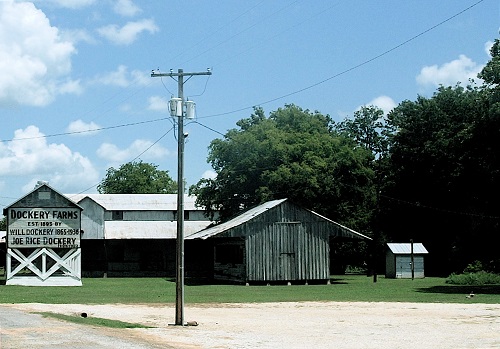
Two of the counties within Delta Electric’s service area - Leflore County and Sunflower County – were the subject of a recent ILSR study in partnership with the Southern Rural Black Women’s Initiative (SRBWI) on the benefits of telehealth in predominantly Black counties in the South.
Both counties were among the top three within the study area (ten counties across Mississippi, Alabama, and Georgia) expected to see the greatest savings from the implementation of telehealth – if the region had access to robust, reliable and affordable broadband.
Using conservative estimations, Leflore County would save nearly $6.5 million each year, and Sunflower County would save more than $5 million each year.
Both Sunflower and Leflore are located in Mississippi’s Delta region, and Leflore was one of the counties served by Delta Electric’s RDOF-funded work.
In addition to telehealth, fiber to the farm would also make a big difference in the region, as a majority of the region’s residents are located in rural areas, and many of the counties that comprise the Delta region are economically dependent on agriculture. As a Mississippi State University study found: “counties in Mississippi that lack broadband access also tend to have a large farming workforce,” and that correlation is even stronger in the Delta.
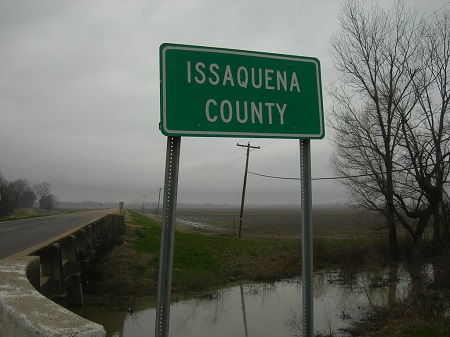
That's particularly true for Issaquena County, located in the Delta on the banks of the Mississippi River, about 45 miles west of Jackson. The county has both the greatest percentage of farm employment in the state (37 percent) and the greatest percentage of the population with no broadband access (96 percent).
Though the county is an outlier, there is a strong correlation between farm employment and lack of broadband access among the region’s remaining 18 counties.
High-speed Internet connectivity is becoming increasingly valuable for farmers to produce more and spend less. With precision agriculture, farmers are able automate agricultural processes, make the hard work of farm labor more efficient, and give farmers access wider markets.
As the farming industry shifts to take advantage of this technology, high-speed Internet will be critical in securing the economic futures of many rural counties in the Delta.
Looking Ahead
In coming months, BEAM will administer the $1.2 billion Mississippi will receive under BEAD, the largest sum the state has received thus far for the expansion of broadband infrastructure. This funding is expected to cover all 300,000 homes across Mississippi that do not have high-speed Internet access, a major portion of which are located in the Delta.
Still, the task will require effective planning and oversight for these dollars to go far in contributing to what the Delta Business Journal described as a potential “Delta Renaissance” brought about by improved connectivity.
Header image of the Delta Feed Co. building in Greenwood, Mississippi courtesy of Wikimedia Commons, Public Domain Mark 1.0
Inline image of Welcome to Grenada sign courtesy of Wikimedia Commons, Attribution-ShareAlike 4.0 International (CC BY-SA 4.0)
Inline image of Sunflower County farm courtesy of Wikimedia Commons, Attribution-ShareAlike 3.0 Unported (CC BY-SA 3.0)
Inline image of Issaquena County sign courtesy of Flickr user Jimmy Emerson, Attribution-NonCommercial-NoDerivs 2.0 Generic (CC BY-NC-ND 2.0)
